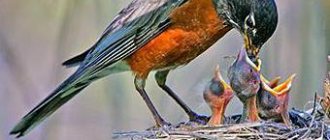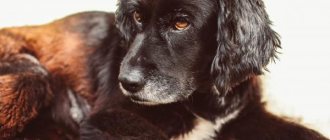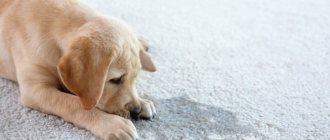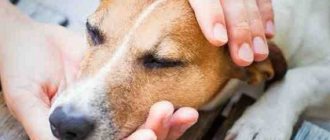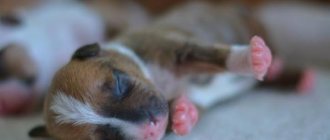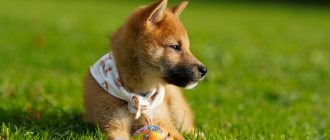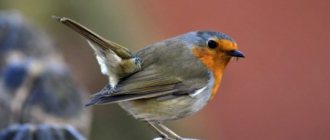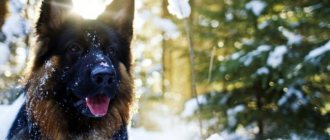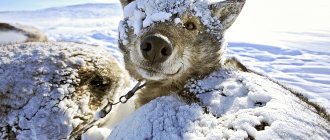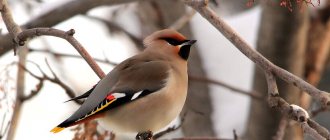Which bird hatches its chicks in winter?
Externally, the crossbill is very similar to an ordinary sparrow.
And although the bird itself is not very large, it is widely known to wildlife lovers for its unusual features and even some oddities (Figure 1). Note: From the point of view of scientific classification, the crossbill belongs to the Passeriformes family. Indeed, in appearance this bird is very similar to an ordinary sparrow, although there are still significant differences between them.
First of all, the crossbill stands out among other birds with its bright plumage. It is because of the color of their feathers that they are often called “northern parrots.” For example, the back and wings of males are colored brown or bright crimson, while the belly remains gray and white. Females look a little simpler, but still stand out with their gray-green plumage with a slight yellow tint.
The second unusual feature lies in the shape of the beak. Unlike other members of the family, whose beak is small and regular in shape, the crossbill’s beak is quite large, and its ends are twisted, forming something like a cross (presumably, this is where the name of the species comes from).
In addition, crossbills have strong legs and very tenacious claws. They are necessary for birds to be securely fixed on a branch during feeding, because these birds often eat food while hanging upside down. They also need tenacious claws in order to firmly grasp the pine cone.
Figure 1. External features of the view
In total, there are 5 subspecies of crossbills in nature, but in Russia they are found mainly in spruce and pine. The names of these subspecies directly indicate dietary preferences, because they feed mainly on conifer cones, but if there is a lack of food, they can also eat buds, resin, aphids, ash or maple seeds.
The diet also explains another strange feature of these birds: the corpses of dead individuals do not decompose for a long time. This is explained by the fact that during their entire life, crossbills eat so much pine resin that after death their bodies mummify on their own and may not decompose for decades.
Where do birds build their nests?
Birds build nests in a variety of places. They use hollows and birdhouses made by people, build homes on the branches of trees and shrubs, in thickets of grass and directly on the ground. Some species are strictly selective, others make nests in any suitable secluded place.
Interesting materials:
Can an orchid be planted in a closed pot? Is it possible to leave cats alone? Is it possible to leave an oil heater on overnight? Is it possible to leave an Intex frame pool over the winter? Is it possible to vacation in Egypt in October? Is it possible to refuse work upon dismissal? Is it possible to refuse to install an electric meter on the street? Is it possible to turn off the gas? Is it possible to turn off the camera on an iPhone? Is it possible to disable comments on Facebook?
Why does the crossbill hatch chicks in winter?
The crossbill is such an unusual bird that many legends have developed around it, including those of a religious nature. For example, the unusual shape of the beak, from the point of view of legend, was formed because it was the crossbill that tried to free the crucified Jesus from the nail. And since this testified to the bird’s courage and devotion, it was granted immortality. Similar legends concern the time of hatching of chicks: they appear in winter, since Christmas is celebrated during this season.
Figure 2. In winter, forests provide the most food for these birds
Of course, such legends can be very fascinating, but each of the features described above has a completely logical scientific explanation. The unusual shape of the beak is needed in order to extract seeds from cones, and the so-called incorruptibility of the ashes is explained by the high content of coniferous tree resins in the bird’s body. And the unusual time for breeding offspring is explained quite logically: it is in winter that many seeds can be found in spruce and pine cones, and they form the basis of the bird’s diet.
Note: Contrary to popular belief, not all crossbill subspecies breed exclusively in winter. Some build nests in spring or even summer. In fact, only individuals living in coniferous forests have this unusual feature.
In addition to the fact that it is in February that pine and spruce cones ripen, the unusual time for breeding offspring is explained by other facts. For example, many birds fly to warmer climes for the winter, and crossbills simply have no competition in terms of choosing or arranging nests. Also, many fur-bearing animals hibernate during the winter, which can pose a danger to their offspring. All these facts indicate that the crossbill has really adapted well to life and has chosen the most optimal time for raising chicks (Figure 2).
Lifestyle
The crossbill can be called a noisy and rather active daytime bird . Using a wavy flight path, it quickly flies from place to place. Songbirds call to each other when they fly in flocks. They make characteristic sounds “kep-kap-kap”.
Not all birds fly to warmer climes for the winter. Many remain to spend the winter in a permanent place. They remain because there is an opportunity to eat other food besides midges. Bugs are preserved under fallen leaves, there is suitable food in plant pods, as well as grains in cones. Such food helps them survive the winter, remaining in their homes. The crossbill bird can be called a permanent resident. The bird not only has a unique beak, but also tenacious legs . Birds find cones by picking out grains from there.
It often happens that birds leave the territory where the cones have already run out and fly to another forest in search of food. Many people know that coniferous trees produce a harvest once every 4-5 years. The cones ripen only towards the end of summer and by winter they are already brittle and dry. When the heat comes, the cones open and the seeds fall to the ground, after which they give rise to new shoots of coniferous trees. This time of year is the most enjoyable for crossbills as they have an abundance of food.
How crossbill hatches chicks
It is interesting not only the fact that young animals appear in the cold season, but also how the female and male arrange their future home.
This feature is really worth considering in more detail:
- The choice of nesting site is given to the female. As a rule, she selects a cozy place in the dense crown of spruce. Snow caps covering the branches of the tree make the nest comfortable and protect it from strong winds, snow or frost.
- To build a nest, natural materials that retain heat are used: pieces of dry moss, feathers, down or animal hair.
- Egg laying begins in February or early March, but some individuals begin to take care of procreation as early as January, although this is the exception rather than the rule.
- The female stays in the nest constantly, warming first the eggs and then the hatched chicks with the warmth of her body. The male is exclusively engaged in obtaining food: he brings cone seeds to the nest and gives them to the female. She, in turn, grinds the food, moistens it with her own saliva and gives it to the chicks.
Figure 3. This is how birds feed their young
Crossbills live in this mode until the young are two months old (Figure 3). After this, the beaks of the grown-up individuals acquire a characteristic curve and they begin to learn to obtain food on their own.
Legends and myths
An interesting fact about the crossbill is that its life is connected with the legend of the crucifixion of Christ. It is believed that this particular bird tried its best to pull out the nails with which Christ was nailed to the cross. However, she was unable to free Jesus, but only bent her beak on the iron, and drops of blood that fell on her feathers colored them forever crimson or red. This explains the strange shape of their beak and unusually bright plumage. Since then, they are sometimes called Christ's birds. They have a special symbolic meaning among Christians.
They are often depicted in Christmas pictures. Stories about them are read in 3rd grade. They are printed in educational coloring books, where they show which letters are used and how the word is emphasized. Use this example to parse test words.
For the efforts of the little brave birds, God rewarded them by making them special. Since then, their babies are born, as a rule, at Christmas, at the same time as Christ, unlike most of their feathered relatives. And after their death, crossbills are not subject to rotting. This is due to the resins contained in the seeds of the cones, which the birds feed on.
What does the crossbill feed its chicks?
As we have already mentioned in previous sections, the basis of the diet of crossbills is seeds from spruce or pine cones. Moreover, such a menu is acceptable not only for adults, but also for chicks that have just been born.
Figure 4. The basis of the diet is seeds of spruce and pine cones
Naturally, a small crossbill is not able to swallow the seed on its own, so parents have to put a lot of effort into preparing the so-called “porridge.” The male leaves the nest daily and brings back seeds extracted from the cones. Next, the female grinds the food and moistens it with her own saliva, turning it into a homogeneous paste (Figure 4). This is what the chicks will feed on until they are two months old. During this period, they reach puberty, and their beak bends, so they become able to obtain food on their own.
Since the seeds in the cones ripen only in the cold season, crossbills have adapted to hatch chicks in winter. In summer or spring, these birds simply would have nothing to feed their offspring.
You will find more interesting facts about these unusual forest birds in the video.
Who is crossbill? Why does the crossbill bring its offspring in winter?
There are whole legends about the little crossbill bird. Despite its small size and similarity to an ordinary sparrow, it boasts a number of features, and sometimes oddities.
Poems about crossbills
Crossbills
In winter, when the birds flew south, leaving their usual place, snow and blizzards swirled in the forest, animals climbed into dens and holes.
As soon as the crossbills are having fun on the branches, the spruce cones are quickly peeling. They will gorge themselves on seeds - Any frost will then prevail.
They sing funny songs and hatch chicks in the bitter cold. Their bright feathers shine in the sun. Well, who will understand these brave crossbills?
And they hang upside down on the branches, holding onto the branch with their grasping beak. Suddenly they take off in a flock from spreading branches, circling for a long time in the shimmering sky.
When everything in the forest freezes until spring, the forest paths are sadly empty, the ground falls asleep under the cold snow. But life triumphs - there are crossbills on the branches. (Tatiana Kersten)
Crossbill chicks
The snow swirls, falling, rushes like a snowstorm, delighting with whiteness, softly spreads and snowflakes sprinkle the ground with sparkles. The snow is in a hurry to cover everything with its hard hands.
If only the chicks, the yellow crossbills, would not get cold. The cross beaks click like tweezers. The chicks are sitting under the spruce paw. Mom and dad are tugging at the kids' bumps. (Irina Batu)
Wintering bird crossbill, which hatches chicks in winter: description, photo
Crossbill bird photo
- Crossbill belongs to the order Passeriformes, the genus Crossbills and the family of finches. In size and body shape, this bird is really similar to a sparrow. However, it has several visual features that other birds do not have. Such wonders are its color and beak shape.
- Due to its unusual beak and color, the crossbill is also called the “northern parrot.”
- Male crossbills have brown, bright crimson backs and wings, but their bellies are colored gray-white.
- Females have much simpler coats - they have gray-green plumage, with a yellow-green tint.
- Crossbills are slightly larger in size than sparrows, but smaller than starlings.
- The crossbill has a rather large head, a powerful beak and strong legs with tenacious claws.
- The “northern parrot” needs strong paws in order to hold on to a branch while eating - very often it eats upside down.
- Tenacious claws are also involved in attaching the bird to the branch, but are also necessary for grasping the cone.
- The beak of the crossbill differs from all other beaks of birds - its ends are twisted and form a kind of cross (the very name of the bird was due to this feature).
Description of the crossbill bird
- There are 5 types of crossbills - their differences mainly lie in external features or food preferences. In Russia, only spruce crossbill or pine crossbill, as well as white-winged crossbill, are found.
- As mentioned above, these small birds feed on cone seeds. However, their diet is not limited only to these products - crossbills can also feast on conifer buds, their resin, ash or maple seeds, and aphids.
- The crossbill can hardly be called a sedentary or migratory bird; most likely, it is an eternal nomad who wanders in constant search of a source of food.
- Another unusual feature of this genus of birds is the long-term preservation of their corpses. The fact is that, thanks to their feeding method, crossbills absorb such a large amount of resins throughout their lives that their bodies mummify over time on their own and do not decompose for decades.
- As for the singing capabilities of the crossbill, it is still a mockingbird. In its trill you can hear the echoes of different birds. In the wild, crossbills use their vocal capabilities to call each other.
What does the bullfinch bird eat?
The bullfinch feeds on seeds, buds, some arachnids and berries (in particular, rowan). Feeding on berries, it eats the seeds out of them, leaving the pulp. The chicks are fed mainly with plant food, adding insects and berries.
Interesting materials:
What curtains will suit a blue sofa? What green manures are best to sow? What green manures are sown in June? What are the best cigarettes? What are the good cigarettes in Ukraine? What are the symptoms of angina? What are the symptoms of intercostal neuralgia? What are the symptoms of cerebral vasoconstriction? What are the symptoms of hip disease? What are the symptoms of hepatitis C?
Why do crossbills build nests and hatch their chicks in winter, in February?
Why do crossbills nest in winter?
The crossed beak, the incorruptibility of the ashes and the winter offspring of crossbills gave rise to a number of legends around them. This species of bird is believed to be holy:
- According to biblical legends, the crossbill was the same bird that tried to free Jesus Christ from the nails driven into his body. It was when the crossbill struggled with the nails that its beak curved and took the shape of a cross.
- Thanks to the courage and devotion of the “northern parrot” to the son of the Lord, he was granted immortality - that is why his body remains incorruptible even after death.
- And the “holy bird” brings its offspring on the days of celebrating the Nativity of Christ.
All these legends, of course, have a right to exist, but there is also a scientific explanation for them:
- A beak of this shape is necessary for the crossbill in order to remove seeds from cones.
- The bird's corpse is protected from decay by pine resins that have accumulated in it over the years.
- Crossbills give birth to their offspring in winter because their main source of food appears precisely at this time.
Biblical legends about the crossbill
- It’s worth noting right away that not all “northern parrots” nest in winter - some birds give birth to their offspring in spring or summer.
- In winter, only those crossbills that live in coniferous forests have babies. The fact is that the seeds of coniferous trees ripen in February. That is why it will be easier for the father of the family to feed his family at this time.
- Also in winter, crossbills no longer have competitors - other birds fly to warm countries, and fur-bearing animals hibernate.
- It is also worth noting that crossbills are excellent parents.
- These birds build their nests in such a way that the top is covered with spruce paws, and the bottom is insulated with feathers or animal hair.
- The father takes charge of feeding the chicks - he brings them food in his beak and throws it into their open, greedy beaks.
- The female crossbill constantly guards and warms the chicks until they fledge and learn to fly.
- By the way, the beaks of babies at birth are not similar to the beaks of their parents - they have straight ends. Only at the moment of full maturity, when the chick is ready to get food on its own, does its beak begin to bend.
Why do crossbills hatch chicks in winter?
- Although winter is beautiful, it happens that not everyone likes winter. Just not crossbills! Even though it is cold, crossbills HAVE chicks at that time (EXACTLY IN WINTER!)!! in the 1st. Feed. In winter there is a lot of food and food. in 2. nest Unlike all birds, crossbills begin building nests and laying eggs in February-March, and sometimes earlier. The crossbill builds its nest in dense branches at the top of a tall spruce. In it, despite the frost, a female sits on her eggs, and a male sings his songs not far away.
- Because in winter there is a lot of food
- at this time there is a lot of food that adult birds and chicks eat
- because at this time there is a lot of food for them, all kinds of cones
- because in winter there is a lot of food for them
- Unlike all birds, crossbills begin building nests and laying eggs in February-March, and sometimes earlier. The crossbill builds its nest in dense branches at the top of a tall spruce. In it, despite the frost, a female sits on her eggs, and a male sings his songs not far away. In our Moscow region, the hatching of crossbill chicks was recorded at a temperature of 35 C. What explains such nesting periods? It turns out that crossbills feed their chicks with crushed pine and spruce seeds. And just towards the end of winter, the cones begin to open and fall off easily. The chicks in the nest do not freeze: the female builds it from thin twigs, moss and lichens, and lines the inside with wool, feathers and moss. The unusual timing of nesting and the crossed beak of crossbills are called the holy bird.
- Full of fir cones. Seeds are a high-fat, high-calorie food.
- Because other seasons of the year are very busy
This interesting bird with a peculiar beak and its unusual appearance has always attracted the attention of people. Crossbill is the main character of many ancient legends and traditions. This bird is loved by everyone who is attracted to unusual and original natural specimens.
a tale of the crossbill and the magpie for children 5-6 years old
After reading this story, discuss it with your child:
- Why did the white-sided magpie decide to judge crossbills? What forest orders were violated by crossbills?
- What birds flew to the magpie's call? Did they agree with the magpie? Why?
- What interesting things did you learn about the life of crossbills? What else do you want to know? (The ability to ask questions is a very important skill that needs to be developed already in preschool age. Therefore, encourage any questions your child has and find the answer to them with him in a book, encyclopedia or on the Internet)
- What do the words about the chicks “take wing” mean?
Act out this fairy tale with your child using a finger theater. You can learn how to quickly make a simple and convenient finger theater for acting out dialogues from the article “How animals prepare for winter. Part 2."
This time the girl went for a walk in the winter forest. Silence in the forest. The forest sleeps under a thick blanket of snow. The birch trees in white hats bowed their heads, the Christmas trees bent their paws under the weight of the snow. Suddenly - noise, flapping of wings, chattering. This white-sided magpie plopped down on a tree branch, shook the snow off it, crackled, and chirped. A crossbill peeked out from under a heavy spruce paw: “Listen, don’t make noise, don’t crack!” Don't scare my chicks! - What? Chicks? In the winter forest? You, crossbill, are violating forest orders. The chicks are supposed to be hatched in the spring. Hey birds, come all here! We will try Klest for violating forest regulations. The first to respond to the magpie's call was a handsome red-breasted bullfinch and sat down on a rowan tree branch. - What's that noise? Why should the crossbill be judged? - he asked. “Well, the magpie says that I’m violating forest rules and breeding chicks in winter.” — And aren’t you afraid of the cold? - No. We make a very thick nest from small twigs, insulate it with wool and feathers, and hide it among spruce branches. This is where the crossbill lays its eggs. - What if the eggs freeze even in such a warm nest? - he asked. - No. Klestiha sits on them for half a month, warming them with its warmth. - How does she eat? - asked the titmouse, who had been swinging on a birch branch for a long time and listening to the conversation. “I bring her seeds from fir cones, buds of fir trees and birches,” said the crossbill. - Well done crossbills! “They are not afraid of frost,” a woodpecker joined the conversation, clinging to the trunk of a spruce tree. “I’ve been watching them for a long time.” Friendly birds! And their nutrition is correct. They love spruce seeds just like me. An aunt owl crawled out of a hollow in an oak tree and said: “Even though I can’t see anything during the day, I can hear everything well.” Well done, crossbills! By spring their mites will be on the wing. Do you know how many Christmas trees will grow from the seeds they dropped? “You’re wrong, magpie,” said the bullfinch. “You’re chattering to no avail,” the titmouse supported him. “There’s nothing to judge the crossbill for,” the woodpecker concluded. Then all the birds started making noise and chattering. The magpie waved its wing at them and flew away. And the girl, who watched the whole story, smiled, was happy for the crossbill and went home. (Author – N.V. Nishcheva. A fairy tale from the book “Educational Fairy Tales” - Childhood-Press, 2002)
Description of crossbill
In spring and summer, a troublesome time begins for all inhabitants of the earth. All the birds are fussing about in their nests. Some are waiting for the offspring, others have already waited for it, feed the babies, and improve their homes.
Among all this bustle, you can notice small birds of dark red plumage with dark wings, which, it would seem, do not care about anything. With a calm look, they flutter through the spruce trees, straightening out the cones and quietly starting their conversations, because crossbills hatch their offspring in winter.
The crossbill bird is quite easy to distinguish from all its other brothers. The bird has an unusual beak with halves crossed with each other. Due to the fact that the beak is quite strong, the bird can easily break spruce branches, a pine cone or the bark of a tree with it.
The size of this bird is small. Its length is about 20 cm. The physique is dense. In addition to the unusual beak of the crossbill, its forked tail also catches the eye.
Some say that the beak is designed precisely so that it is easy for the bird to feed, while others explain its structure with one beautiful legend. They say that during the crucifixion of Christ, this bird tried to pull nails out of his body.
And since her size is no more and her strength is correspondingly small, she did not succeed. But the beak was permanently damaged. The bird has very tenacious legs, which allows it to easily climb trees and hang upside down to reach a pine cone.
The color of the females is slightly different from the color of the males. The breast of males is crimson, while the breasts of females are green interspersed with gray. The predominant color in the tails and wings of birds is brown.
Birds sing at high notes. Whistling is mixed with their chirping. These sounds are mainly heard during flights. The rest of the time the birds prefer to remain silent.
Crossbills, based on their characteristics, external characteristics and habitats, are divided into species, the main ones of which are spruce crossbills, white-winged crossbills and pine crossbills.
All species of crossbills are diurnal. You can notice them everywhere. In search of food, they quickly fly from place to place in large noisy and noisy flocks.
Nutrition
The main food of crossbills are fir cones. The shape of the crossbill's beak allows it to easily bend the scales of cones and get seeds from there. Moreover, it is enough for the bird to get just a couple of seeds from the cone.
The rest they throw away. These cones, from which it is much easier to get the grains, after they select the proteins and find a use for them. In addition, mice and other rodents eat such cones with great pleasure.
It is interesting to observe how crossbills stubbornly cling to a branch with their paws and use their peculiar beak to try to get seeds from the cone. At this time, they can not only turn upside down, but also make a “dead loop.”
In addition to this food, crossbills happily consume resin from trees, bark, insects and aphids. When kept in captivity, they can feed on mealyworms, oatmeal, rowan berries, millet, hemp and sunflower seeds.
Habitat and lifestyle
These birds have to constantly migrate from place to place in search of food. Therefore, to the question - is the crossbill a migratory bird or a sedentary bird, the answer is unequivocal - yes, these birds roam throughout the year. At the same time, crossbills do not have any specific habitat.
Sometimes there are simply a huge number of them in one place. Some time passes and next year, for example, you may not notice a single representative of these birds in those places.
It all depends on the yield of coniferous trees, which are their main source of nutrition. The entire northern hemisphere with coniferous forests is the main habitat of crossbills. They love coniferous and mixed forests. You won't find them in cedar forests.
Birds build their nests almost at the very tops of spruce or pine trees among thick branches, in places where snow and rain do not fall. The bird begins to think about building its own home with the onset of the first cold weather.
The bird's nest is warm and strong with warm bedding and strong, thick walls. It is extremely rare to see birds on the ground. Their main habitat is in trees. There they eat, sleep and spend all their free time.
As for the enemies of birds in nature, the crossbill simply does not have them and never has had them. This is due to the bird's diet. Their main product is seeds, which have embalming properties.
These seeds make crossbill meat bitter and tasteless. It has been noticed that these birds do not decompose after their death, but turn into a mummy. This fact is explained by the high content of resins in their bodies.
Keeping a bird at home
Many bird and animal lovers know how pleasant, interesting and good-natured the crossbill is. They are sociable and good-natured birds. This allows new owners to quickly gain confidence in the bird after it is forced into captivity. The bird gets used to everything new that happens to the crossbill very quickly.
It has already been mentioned that the bird’s cage must be durable. It would be even better in the warm season to build something like an enclosure for your pet, with bushes and trees inside it. This will give the bird the opportunity to feel in captivity, as if in its native element in the forest.
Thanks to such conditions, the bird feels great and reproduces in captivity. If the conditions of its maintenance leave much to be desired, then the color of the bird becomes less bright and saturated, the crossbill gradually fades away and eventually dies.
It is not advisable to keep birds in a well-heated room; they are uncomfortable in such conditions. When well maintained, crossbills delight their caring owners with their beautiful singing and restless, good-natured character.
Reproduction and lifespan of the crossbill bird
There is no specific period of time for the reproduction of adult individuals of these birds. The female lays about 5 blue eggs in nests insulated with moss and lichen.
For 14 days, the female incubates the eggs. And even after the appearance of completely helpless chicks, she does not leave her home until the chicks fledge. All this time, the male is her reliable assistant and protector. He carries food to the female in his peculiar beak.
The crossbill in winter is the only bird that is not afraid to raise its chicks in the frosty cold. This happens for one reason that is important for these birds. It is in winter that the cones of coniferous trees ripen.
Parents have to feed their chicks for about two months until their beak becomes the same as that of adult crossbills. As soon as the beak of birds takes on the outlines of adult relatives, they learn to cut up cones and gradually begin to live independently.
Crossbill chicks can be distinguished from adults not only by their beaks, but also by the color of their plumage. Initially, in birds it is gray with spots.
What is decisive in the timing of chick hatching?
This is a half-brood or half-chick type of maturity. They need food and warmth from their parents.
Interesting materials:
What greens are sown in autumn? Who should wash and dress the deceased? Who can turn their head 360 degrees? Who voiced the Bremen Town Musicians Magomaev and Anofriev? Who died in Lera's real boys? Is it possible to revoke a driver's license? Is it possible for Azerbaijanis to marry Russians? Is it possible to give puppies a boiled egg? Is it possible to do Diaskintest after vaccination? Is it possible to have a caesarean section at will in Ukraine?
REPRODUCTION
Crossbills, like all birds, hatch their chicks when there is enough food. Birds are concerned that it can be easily found near the nest, because in this case there is no need to leave eggs and chicks unattended for a long time. In addition, the chicks, having left the nest, will also not be left without food, so chicks appear in crossbills not only in winter, but also in autumn and spring. However, most often the nesting period occurs in December-May.
Crossbills build nests when there is still deep snow everywhere and there are severe frosts. One of the elements of the mating ritual of these birds is that the male and female feed each other seeds.
After mating, both birds begin building a nest. It is located on spruce paws, under the cover of branches that protect birds sitting on the nest, and in the future, chicks from snow and rain. The nest of crossbills is large and well insulated. The female lays 3-4 eggs. Incubation lasts 12-13 days. Crossbill chicks remain in the nest for about 2 weeks, but even after leaving the nest, the parents continue to feed them. In lean years, many chicks die.
Cartoon for kids about crossbill
In this cartoon, kids will get acquainted with forest inhabitants and find out who spends the winter how. After watching the cartoon, ask your child: “Why couldn’t the thrush (caterpillar, bear, crossbill) come to the little hare for the New Year? Who came to the Christmas tree? (Look at the last shots - bullfinches, foxes, fawns, wild boars, squirrels, hares).” Ask which of the forest inhabitants your child would invite to the New Year's party (who could come to it). Who would you invite to a summer party?
https://youtu.be/wOvOuLQ4VAc
BIBLE OBSERVATIONS
Crossbill lives in coniferous forests of Europe, Asia, North America and North-West Africa. The nesting sites of these birds are unstable, as the birds constantly roam in search of feeding sites. When the food harvest fails, they can fly away from the forests and appear in the steppes and even deserts. The spruce crossbill is slightly larger in size. The birds do not look very dexterous, but this impression immediately disappears when you see them on a tree. The crossbill not only runs quickly along the branches and turns over on them, but also runs upside down. No wonder the famous zoologist Alfred Brehm called it the “northern parrot.” There are several types of crossbills, including pine crossbill and white-winged crossbill.
- The beaks of crossbill chicks are straight. Parents feed their babies with semi-digested seeds, a special gruel that forms in their crops. Over time, the chicks' beaks change shape.
- Previously, crossbills were considered holy birds. This idea was born for several reasons. Firstly, bird corpses do not decompose for a long time (birds seem to be “tarred” with the resin of coniferous plants). Secondly, they have cross-shaped beaks (needed for obtaining seeds). And thirdly, they nest in winter, but their featherless chicks do not freeze (crossbills have warm nests).
- Some foresters believe that crossbills harm spruce trees, but this opinion is wrong.
Content
With careful care, crossbills can live up to 10 years in captivity. Crossbills get along well in enclosures, they are friendly. These birds are best kept in large cages measuring 1 m by 1.8 m. The optimal material for cages is metal. Crossbills quickly get used to the new environment. You need to know that in captivity, crossbill quickly loses the brightness of its plumage.
Nutrition
Feeding crossbills at home is not difficult. Usually they willingly eat mixtures for canaries, pine nuts (3 nuts per day for one bird), rowan berries, apple slices, vegetables: cabbage, carrots. There are special mixtures for crossbills. They contain cone seeds, flax, hemp, and sunflower seeds. An excellent addition to the diet of crossbills will be Manchurian nuts, twigs, worms and small animals.
Breeding at home
Reproduction at home is at a fairly profitable level. When breeding these birds, many fanciers obtain a mixture of crossbill and canary, and the canary's singing is clearly noticeable in the former.
At home, crossbills reproduce well, but only if the owners take care of good conditions. First, several birds are released into the cage, where they choose a mate. The resulting pair is transferred to another cage for reproduction. In the conditions of an artificially created nest in a cage, crossbills give good offspring.
